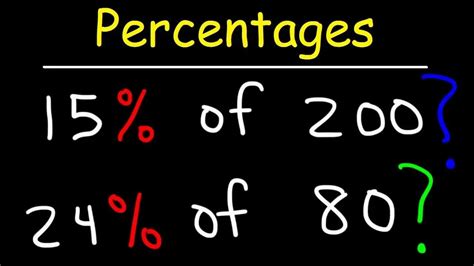How to Calculate Percentages: A Comprehensive Guide
Percentages are a fundamental part of everyday life, used in everything from calculating discounts and taxes to understanding statistics and financial reports. Knowing how to calculate percentages accurately is a crucial skill. This guide provides a comprehensive explanation, covering various scenarios and offering practical examples.
Understanding Percentages
A percentage is a fraction or ratio expressed as a number out of 100. The symbol "%" represents "percent," meaning "per hundred." For example, 50% means 50 out of 100, or 50/100, which simplifies to 1/2 or 0.5.
Calculating Percentages: The Basic Formula
The fundamental formula for calculating a percentage is:
(Part / Whole) x 100% = Percentage
Let's break this down:
- Part: This is the specific amount you're interested in expressing as a percentage of the whole.
- Whole: This represents the total amount.
Example 1: Finding a Percentage of a Whole
Let's say you scored 25 out of 30 on a test. To calculate your percentage score:
-
Identify the part and the whole:
- Part = 25 (your score)
- Whole = 30 (total possible score)
-
Apply the formula: (25 / 30) x 100% = 83.33%
Therefore, your test score is 83.33%.
Example 2: Finding the Percentage Increase or Decrease
Percentage change is often used to show how much a value has increased or decreased over time. The formula is:
((New Value - Old Value) / Old Value) x 100% = Percentage Change
Let's say the price of a product increased from $50 to $60. The percentage increase is:
-
Identify the new and old values:
- New Value = $60
- Old Value = $50
-
Apply the formula: (($60 - $50) / $50) x 100% = 20%
The price increased by 20%. A negative result indicates a percentage decrease.
Calculating the Part or the Whole
The percentage formula can be rearranged to find the part or the whole if you know the percentage and one of the other values.
Finding the Part:
** (Percentage/100) x Whole = Part**
For example, what is 20% of 150?
(20/100) x 150 = 30
Finding the Whole:
(Part / Percentage) x 100 = Whole
For example, if 30 is 20% of a number, what is that number?
(30 / 20) x 100 = 150
Tips for Accurate Percentage Calculations
- Double-check your calculations: Errors are easy to make, so always verify your work.
- Use a calculator: Calculators are invaluable for complex percentage calculations.
- Understand the context: Ensure you're applying the correct formula for the situation.
By mastering these techniques, you’ll be able to confidently tackle a wide range of percentage calculations in various contexts. Remember to practice regularly to solidify your understanding and improve your speed and accuracy.
